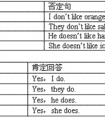Without ______ a word, he went out of the room ______ the light on. [ ]A. say, for B. saying, but C. to say, put D. saying, with -九年级英语
before、after表一点,ago、later表一段。
before能接完成时,ago过去极有限。
since以来during间,since时态多变换。
与之相比beside,除了lastbutone。
复不定for、找、价、原,对、给、段、去、为、作、赞。
快到、对、向towards,工、学、军、城、北、上、南。
butfor否定用虚拟,复合介词待后言。
ing型由于鉴,除了除外与包合。
之后、关于、在。。。。。。方面,有关介词须记全。
in内to外表位置,山、水、国界to在前。
考点名称:独立主格
- 独立主格结构:
是由名词或代词作为逻辑主语,加上分词、形容词、副词、动词不定式或介词短语作为逻辑谓语构成。
这种结构在形式上与主句没有关系,通常称为“独立主格结构”。 - 独立主格的形式:
一、一般独立主格形式
与主句逻辑关系松散
形式为: n. + -ed/-ing形式; n. +不定式; n. +介词短语; n. +形容词; n. +副词;
①名词/主格代词+现在分词
名词/主格代词与现在分词之间是主动关系。
如:
The girl staring at him(= As the girl stared at him), he didn't know what to say.
姑娘两眼望着他,他不知道说什么好。
Time permitting(= If time permits), we will go for an outing tomorrow.
如果时间允许的话,我们明天去郊游。
②名词/主格代词+过去分词
名词/主格代词与过去分词之间是被动关系。
如:
The problems solved(= As the problems were solved), the quality has been improved.
随着问题的解决,质量已经提高了。
Her glasses broken(= Because her glasses were broken), she couldn't see the words on the blackboard.
由于眼镜摔坏了,她看不见黑板上的字。
③名词/主格代词+不定式
名词/主格代词与不定式之间是主动关系,且强调的是一次具体性的动作。
如:
He is going to make a model plane,some old parts to help.
借助于一些旧零件,他要做一个飞机模型。
They said good-bye to each other,one to go home, the other to go to the bookstore.
他们道别后,一个回了家,一个去了书店。
④名词/主格代词+形容词
如:
An air accident happened to the plane,nobody alive.
那架飞机遭遇了空难,无一人生还。
So many people absent, the meeting had to be called off.
这么多人缺席,会议不得不取消。
⑤名词/主格代词+副词
如:
He put on his sweater ,wrong side out. 他把毛衣穿反了。
The meeting over, they all went home. 会议一结束,他们就都回家了。
⑥名词/主格代词+介词短语
如:
The boy goes to the classroom,book in hand. 那男孩手里拿着书去教室。
Mary was sitting near the fire,her back towards the door.玛丽靠近火炉坐着,背对着门。
⑦名词/主格代词+名词
His first shot failure,he fired again.
他第一枪没击中,又打了一枪。
Two hundred people died in the accident, many of them children.
两百人死于事故,其中有许多儿童。
二、- with 引导的独立主格:与主句逻辑关系紧密
形式为: with + n. + -ed/-ing形式; with + n. +adj.; with +n. +介词短语
with ( without)+宾语(名词/代词)+宾语补足语,宾语通常由名词或代词充当,但代词一定要用宾格。
上文的独立主格结构的几种情况都适用于此结构。
The girl hid her box without anyone knowing where it was.
小女孩把盒子藏了起来,没有人知道它在哪里。(without +名词/代词+动词的-ing形式)
Without a word more spoken, she left the meeting room.
她没再说什么话就离开了会议室。(without+名词/代词+动词的-ed形式)
The kid feels excited with so many places of interest to visit.
有这么多的名胜可参观,小孩很激动。(with+名词/代词+动词不定式)
The boy was walking, with his father ahead.
父亲在前,小孩在后走着。(with+名词/代词+副词)
He stood at the door, with a computer in his hand. 或He stood at the door, computer in hand.
他站在门口,手里拿着一部电脑。(with+名词/代词+介词短语)
With his son so disappointing, the old man felt unhappy.
由于儿子如此令人失望,老人感到很不快乐。(with+名词/代词+形容词)
在with (without) 的复合结构中,多数情况下with 能省略,但without 不能省略。
三、- each引导的强调型独立主格:
形式为:句子 +复数名词结尾 , each +介词短语/形容词短语/名词短语/-ing形式/-ed形式
这种独立主格结构为了强调句尾的复数名词
如:
Under the restructuring, the huge organization that operates the company's basic businesses will be divided into five groups,each with its own executive
四、其他形式 :
There being +名词(代词)
如:
There being nothing else to do, we went home. 没有别的事可做,我们就回家了。
There being no further business, I declare the meeting closed. 没有再要讨论的事了,我宣布散会。
It being +名词(代词)
如:
It being Christmas, the government offices were closed. 由于圣诞节的缘故,政府机关都休息。
It being a holiday, all the shops were shut. 由于今天是假日,所有商店都关门了。 - 独立主格运用注意:
1.独立主格转换成状语从句,当状语从句的主语与主句的主语不是指同一个对象时,可用独立主格结构取代状语从句,但不再保留连词。如:
After class was over (=Class being over / Class over), the students soon left the classroom.
下课后,学生很快离开了课室。
2. 不能省略being (having been)的情形:在下列两种情况下,独立主格结构中的being(或having been)不能省略。
(1) 独立主格的逻辑主语是代词时。如:
Itbeing Sunday, we went to church.
因为是星期天,我们去做了礼拜。
(2)在There being+名词的结构中。如:
There beingno bus, we had to go home on foot.
因为没有公共汽车,所以我们不得不步行回家。
3. 在“名词(或代词)+介词短语”构成的独立主格结构中,一般不用形容词性物主代词和冠词。如:
Miss Smith entered the classroom,book in hand.
史密斯小姐走进了课室,手里拿着一本书。
比较with的复合结构。如:
Miss Smith entered the classroom,with a book in her hand.
4. 独立主格结构没有所有格形式.
The chief-editor arriving, we began the meeting.
主编来了,我们开始开会。(比较动名词复合结构。) - 独立主格结构的用法:
独立主格结构主要表示谓语动词发生的时间、原因、条件或伴随情况等,相当于一个状语从句或并列句。
1.用作时间状语
The work done(=After the work had been done), we went home.
工作完成后,我们就回家了。
2.用作条件状语
Weather permitting(=If weather permits), they will go on an outing to the beach tomorrow.
如果天气允许的话,他们将在明天组织一次海滨小游。
3.用作原因状语
An important lecture to be given tomorrow(=As an important lecture will be given tomorrow), the professor has to stay up late into the night.
因为明天要发表一个重要的演讲,教授不得不熬夜到很晚。
4.用作伴随状语
He was lying on the grass,his hands crossed under his head(=and his hands were crossed under his head).
他躺在草地上,将两手交叉枕在脑后。
5.表示补充说明
We redoubled our efforts,each man working like two.
我们加倍努力,一个人干两个人的活。
- 最新内容
- 相关内容
- 网友推荐
- 图文推荐
上一篇:用所给词的正确形式填空。1. The raincoat is used for (keep) off the rain. 2. It's hard (imagine) how they can improve English so quickly. 3. When you do you-九年级英语
下一篇:______ the help of my teacher, I didn't give up ______. [ ]A. Of, workingB. With, trying C. By, tryD. With, work -九年级英语
零零教育社区:论坛热帖子
| [家长教育] 孩子为什么会和父母感情疏离? (2019-07-14) |
| [教师分享] 给远方姐姐的一封信 (2018-11-07) |
| [教师分享] 伸缩门 (2018-11-07) |
| [教师分享] 回家乡 (2018-11-07) |
| [教师分享] 是风味也是人间 (2018-11-07) |
| [教师分享] 一句格言的启示 (2018-11-07) |
| [教师分享] 无规矩不成方圆 (2018-11-07) |
| [教师分享] 第十届全国教育名家论坛有感(二) (2018-11-07) |
| [教师分享] 贪玩的小狗 (2018-11-07) |
| [教师分享] 未命名文章 (2018-11-07) |

![Which of the following can you probably see in the meeting room? [ ]A. B. C.D. -七年级英语](http://www.00-edu.com/d/file/ks/4/2/dongmingci/2020-01-08/small97361980a56115e1c9237567439904fe1578422951.jpg)

![—Can the boy finish_____ the book in about a week? —I think he can. [ ]A. read B. reading C. to read D. reads -八年级英语](http://www.00-edu.com/d/file/ks/4/2/dongmingci/2020-01-08/smallfa4d713075e249356362fe7392193a301578421751.png)


